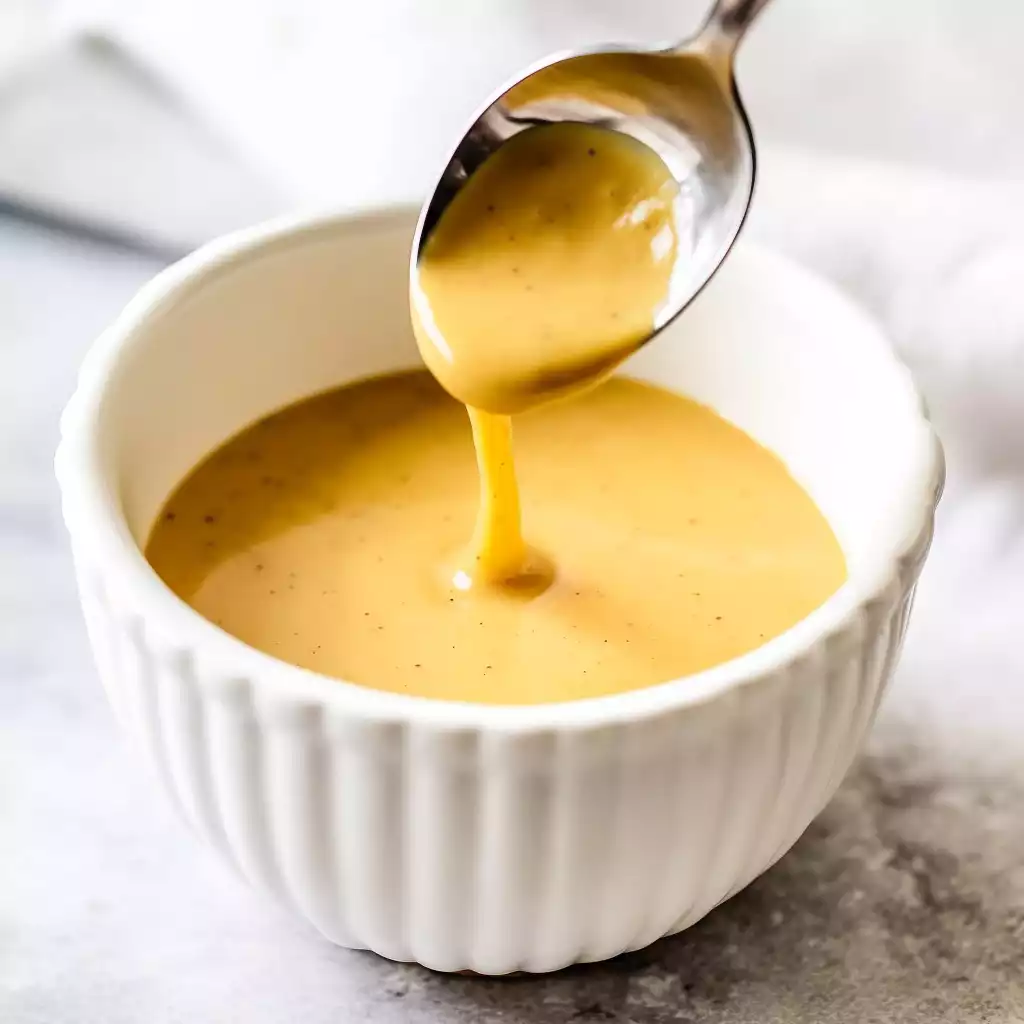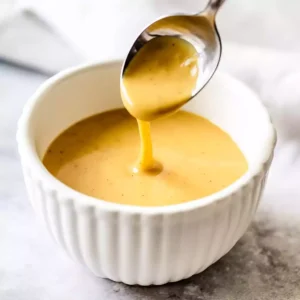
Creating your own honey mustard sauce opens up a world of flavor possibilities for your kitchen adventures.
This classic condiment has a rich history, believed to have originated in Europe centuries ago, where honey and mustard were combined for both culinary and medicinal purposes.
Over time, this delectable blend made its way across continents, evolving into the beloved sauce we know today. Its versatility shines through in dishes ranging from salads to sandwiches, and even as a dipping sauce for crispy snacks.
In this recipe, we’ll delve into crafting a homemade honey mustard sauce that elevates any dish it accompanies. With just a handful of simple ingredients and easy-to-follow steps, you’ll be whipping up this flavorful sauce in no time.
Expert Tip: Experiment with different types of mustard for varied flavor profiles, such as whole grain or spicy brown mustard.
Mayonnaise: Mayonnaise serves as the creamy base of this honey mustard sauce, adding a rich texture and subtle tanginess to the final product. Its emulsified nature helps bind the ingredients together, resulting in a smooth and velvety consistency.
Mustard Dijon: Dijon mustard brings a bold and tangy flavor to the sauce, complementing the sweetness of the honey. Its distinctive taste adds depth and complexity, making it a key component of the classic honey mustard flavor profile.
Honey: Honey provides the sweet counterpart to the tangy mustard, balancing out the flavors and adding a touch of natural sweetness. Its sticky texture helps to thicken the sauce, while its subtle floral notes enhance its overall complexity.
Vinegar: A splash of vinegar adds a subtle acidity to the sauce, brightening up the flavors and balancing out the richness of the mayonnaise and sweetness of the honey. It also helps to enhance the tanginess of the mustard, creating a well-rounded and harmonious flavor profile.
Salt: A pinch of salt enhances the flavors of the other ingredients, helping to bring out their natural tastes and harmonize the overall flavor profile of the sauce.
Cayenne Pepper: A hint of cayenne pepper adds a subtle kick of heat to the sauce, complementing the sweetness of the honey and adding a gentle warmth to each bite. Its presence is subtle but adds depth and complexity to the flavor profile of the sauce.
Expert Tip: Adjust the amount of cayenne pepper to control the level of spiciness according to your preference.
Expert Tip: For a smoother consistency, you can blend the ingredients together using a food processor or immersion blender.
Yes, feel free to adjust the amount of honey to suit your taste preferences. Add more for a sweeter sauce or reduce for a more tangy flavor.
The honey mustard sauce can be stored in an airtight container in the refrigerator for up to one week. Make sure to give it a good stir before serving, as the ingredients may separate slightly over time.
While Dijon mustard is traditional in honey mustard sauce and adds a distinct flavor, you can substitute it with regular mustard if needed. Just keep in mind that the flavor profile may be slightly different.
Yes, this honey mustard sauce is vegetarian-friendly as it does not contain any meat or animal-derived ingredients.
Yes, you can prepare the sauce ahead of time and store it in the refrigerator until ready to use. Just give it a good stir before serving to ensure that the ingredients are well combined.
Here are some more recipes for you to enjoy! If you my recipes don’t forget to rate and leave a comment.
If you have any recipe suggestions, please do not hesitate to ask me. A great way to stay in contact with me is through Instagram, Facebook, Twitter and YouTube. Don’t forget to tag me @CookwithNabeela in your recipe photos!

Subscribe now to receive my latest recipes directly in your inbox. Stay up-to-date and never miss out!

I love to cook! I want to share with you my favourite, delicious family-friendly recipes. I want to inspire you to create fantastic food for your family every day.
Add your first comment to this post